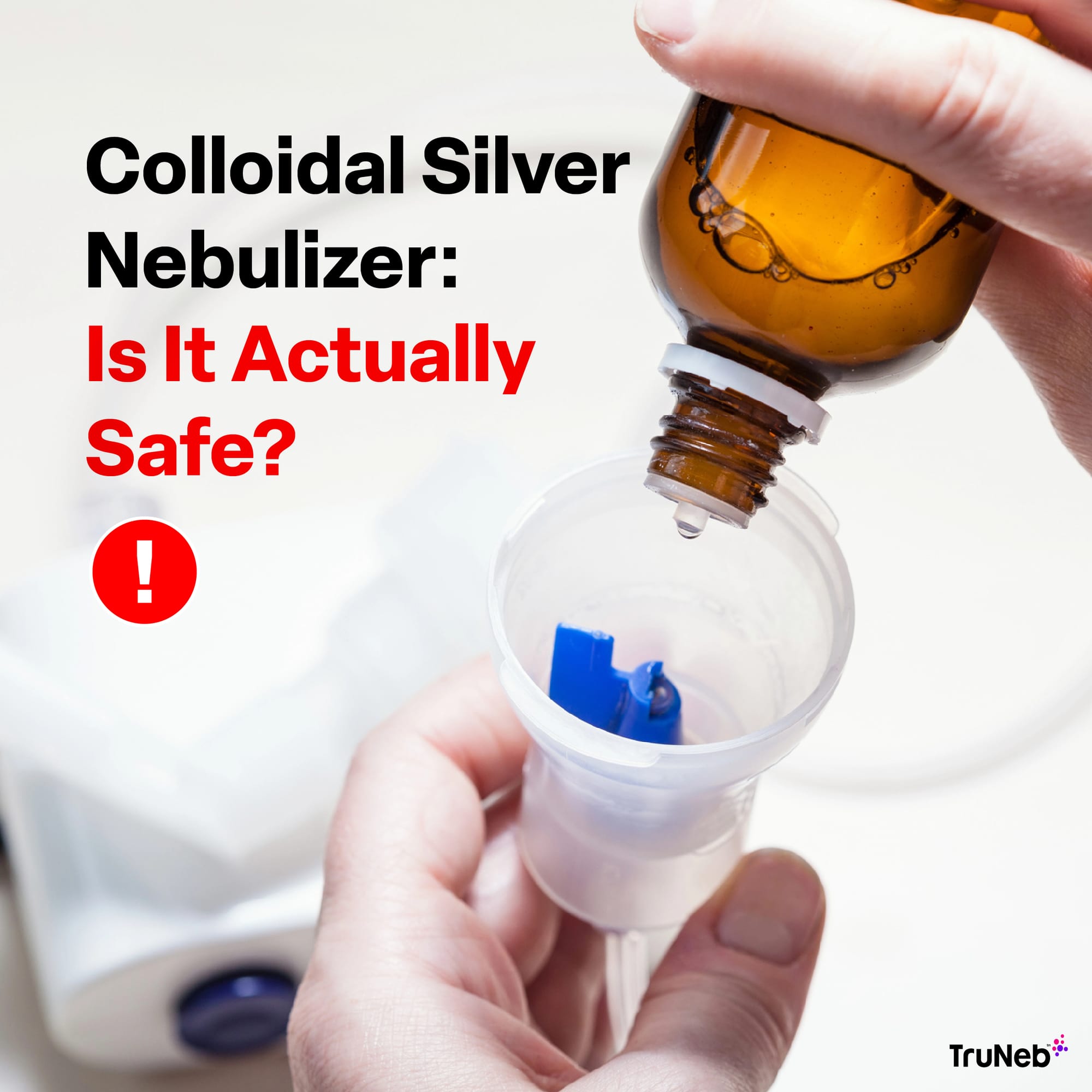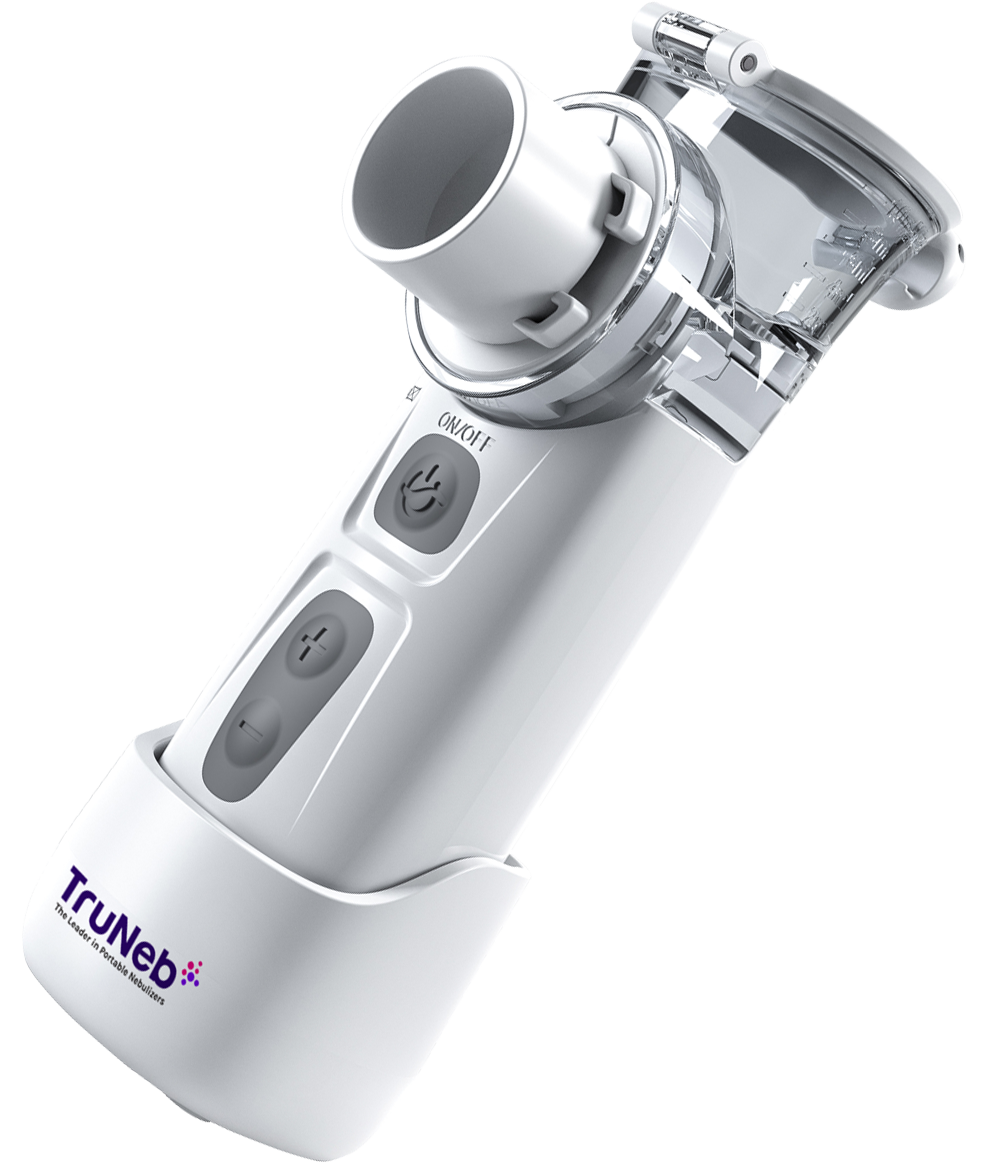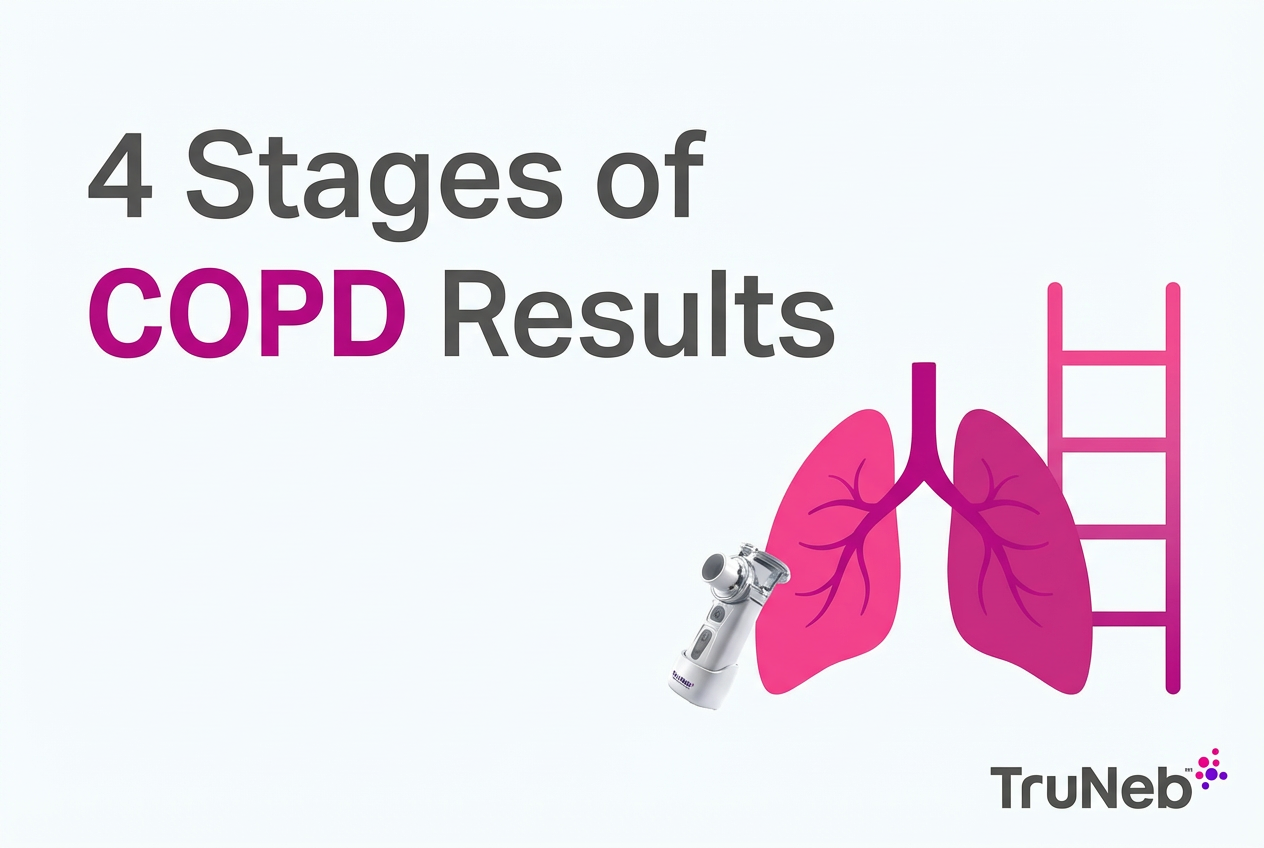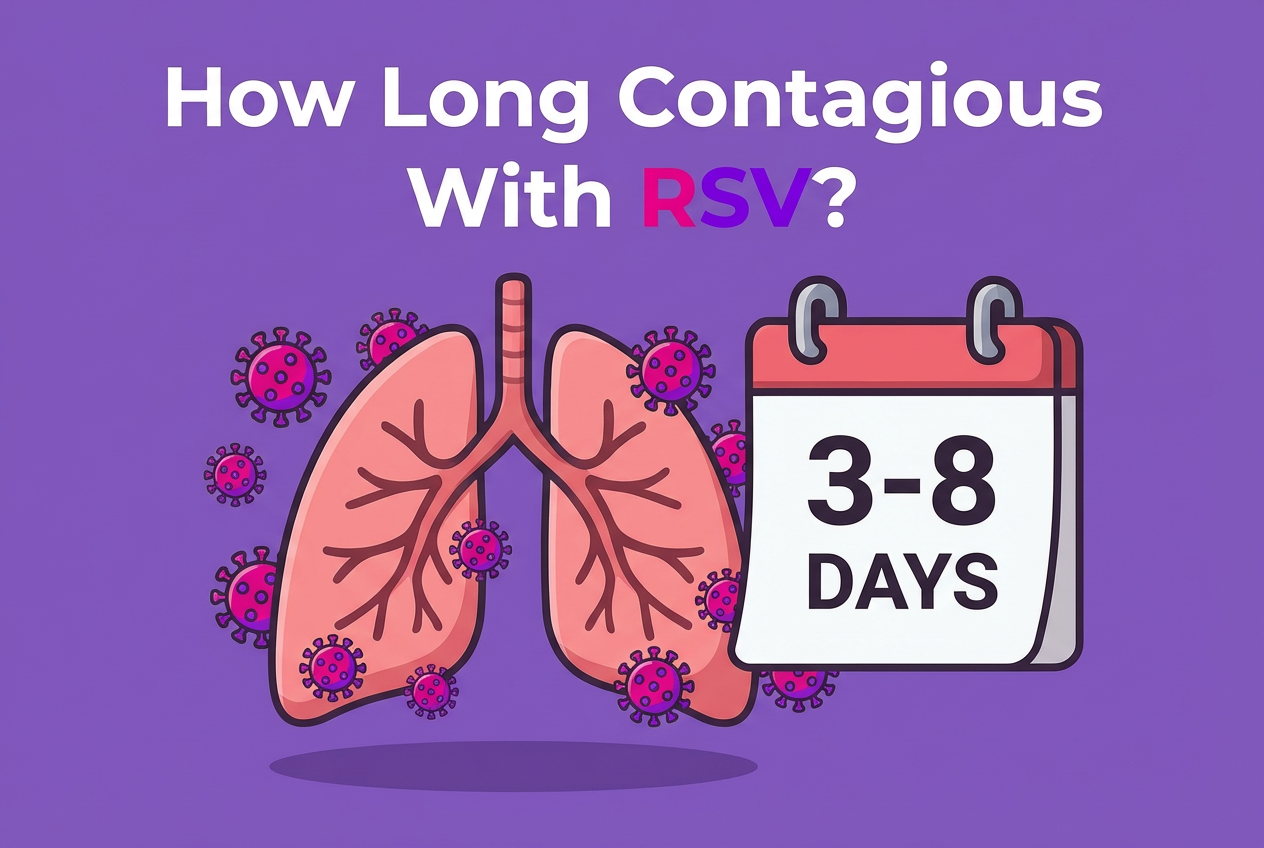On this page

You’ve probably heard about colloidal silver popping up in health discussions, and maybe even seen it mentioned for treating respiratory issues. But what’s the real deal when it comes to using a colloidal silver nebulizer? Is it the miracle some claim, or is it more likely to turn you blue than give you clear lungs?
In this article, we’re going to break down the facts—no fluff, just the stuff you really need to know. Whether you’re considering a nebulizer for yourself or just want to learn what the buzz is all about, we’ve got you covered with a friendly, straightforward guide. Let’s dive into the science, the risks, and whether colloidal silver nebulization is worth a try. Spoiler alert: It’s not as simple as some would have you believe!
What Is Colloidal Silver?
Colloidal silver is essentially a solution made up of tiny particles of silver suspended in a liquid, usually water. Unlike silver you’d find in jewelry or cutlery, the silver particles in colloidal silver are small enough to remain floating in the liquid, which is what gives the product its unique properties. It’s often marketed as a natural remedy for a wide range of conditions because of silver’s well-known antimicrobial effects. The effectiveness of colloidal silver, especially when ingested or inhaled, is where things get murky.
Historical Uses in Medicine
Silver has a long history in medical treatments. Before modern antibiotics were developed, silver was used to prevent infections and treat wounds. In the late 19th and early 20th centuries, colloidal silver became popular as a remedy for everything from skin infections to stomach ulcers. In fact, surgeons and doctors used it to disinfect wounds and believed it could help cure various ailments. However, as antibiotics came into the picture, silver took a backseat due to the more targeted and effective treatment options that antibiotics provided.
Modern Resurgence in Alternative Health
In recent years, colloidal silver has made a comeback, mainly within the alternative health community. Advocates claim that it can treat infections, boost the immune system, and even help with conditions like pneumonia, sinus infections, and respiratory illnesses when used in a nebulizer. Despite its past medical use and current popularity, the actual benefits of colloidal silver, especially when taken internally or inhaled, remain controversial and largely unsupported by scientific evidence.
How Colloidal Silver Works (or Doesn’t)
Silver has long been praised for its antimicrobial properties, and that’s the basis for why colloidal silver continues to be marketed as a cure-all. The theory is that when silver particles come into contact with bacteria, viruses, or fungi, they damage the microbes' cells and stop them from reproducing, effectively killing them. This ability to destroy harmful pathogens is why silver is still used in some topical wound treatments and even in bandages today.
The Science Behind Its Antimicrobial Properties
Silver works by releasing silver ions, which can penetrate the cell walls of bacteria, disrupting their structure and halting their ability to reproduce. Some studies have shown that silver can kill a wide range of microbes, including certain bacteria and fungi. For this reason, it’s often included in wound dressings and medical devices to prevent infections. But, it’s important to note that the type of silver used in these products is not the same as colloidal silver you see sold as a supplement.
Why Some Believe It Helps with Infections and Respiratory Issues
Supporters of colloidal silver argue that inhaling it through a nebulizer can help with respiratory infections, pneumonia, and even COVID-19. The belief is that nebulizing colloidal silver allows the particles to reach the lungs directly, attacking harmful microbes and reducing inflammation. This has led to an increase in its use among those seeking alternative treatments for chronic respiratory conditions.
Lack of Solid Evidence for Internal or Inhalation Use
Despite the claims, there’s no strong scientific evidence that colloidal silver is effective when taken internally or inhaled. In fact, major health authorities, including the FDA and the World Health Organization, warn against its use because of potential risks, like argyria (a condition that turns the skin bluish-gray) and damage to vital organs like the kidneys and liver. Most studies that suggest silver's effectiveness focus on topical applications, not ingestion or inhalation, which makes colloidal silver nebulizers a controversial option for those with respiratory issues.
How Does a Colloidal Silver Nebulizer Work?
What Is a Nebulizer?
A nebulizer is a medical device that turns liquid medication into a fine mist, which can then be inhaled directly into the lungs. It’s used to treat conditions like asthma, COPD, and other respiratory issues. The idea is simple: by inhaling the mist, the medication can go straight to where it’s needed most — your airways and lungs — making it more effective in treating breathing problems.
Nebulizers are often prescribed for people who have trouble using inhalers or need to administer medications like bronchodilators or steroids to keep their airways open and reduce inflammation. They’re easy to use and typically come in portable models, making them convenient for both home use and on-the-go treatments. For people with chronic respiratory conditions, nebulizers are an essential part of their treatment regimen, delivering relief quickly and effectively.
The Appeal of Colloidal Silver Nebulizers
So, why are some people turning to nebulizers to inhale colloidal silver? Well, proponents of colloidal silver nebulizers claim that inhaling silver particles can help target respiratory infections, inflammation, and even viral conditions like COVID-19. The idea is that by turning colloidal silver into a mist, you can deliver its purported antimicrobial and anti-inflammatory benefits directly to the lungs, bypassing the digestive system and bloodstream.
Claims Made by Proponents: Anti-Inflammatory, Antiviral, Antibacterial Benefits
Supporters argue that colloidal silver is not only antibacterial, but also antiviral and antifungal. This has led many to believe that inhaling colloidal silver through a nebulizer can help combat respiratory infections like pneumonia, bronchitis, or even sinus infections. Some also believe that it may help reduce inflammation in the lungs, making it useful for conditions like asthma or chronic obstructive pulmonary disease (COPD).
The appeal is further fueled by anecdotal reports of people experiencing relief from persistent respiratory symptoms after using colloidal silver in a nebulizer. Claims often suggest that it can eliminate harmful bacteria and viruses in the lungs, helping the body heal more quickly and preventing infections from worsening.
But, it’s important to note that these claims are not backed by robust scientific evidence, and major health organizations have raised concerns about the safety of inhaling colloidal silver.
What Does the Research Say?
Colloidal Silver for Respiratory Conditions
While there’s a lot of buzz around colloidal silver, especially in alternative health circles, the research supporting its use for respiratory conditions is limited and mixed. There have been some studies investigating the effects of nanosilver (a more refined version of colloidal silver with smaller particles) on conditions like pneumonia, fungal infections, and even COVID-19.
Overview of Research on Colloidal Silver’s Effects on Pneumonia, Fungal Infections, and COVID-19
Some research has shown promising results with nanosilver solutions. In controlled studies, nanosilver has shown antiviral, antibacterial, and antifungal properties. One study found that nebulizing nanosilver in patients with pneumonia helped reduce symptoms and improve lung function more rapidly than traditional treatments. Similar studies showed that nebulized nanosilver solutions could help clear fungal sinus infections faster than conventional treatments.
During the early days of the COVID-19 pandemic, some exploratory research was conducted on the potential benefits of nebulizing nanosilver. In a few isolated cases, patients with severe COVID-19 symptoms showed improvement in their respiratory function after using nanosilver solutions. However, these studies were limited in scope, and larger, more thorough research is still needed before making any definitive claims.
Promising Results with Nanosilver Solutions
The most promising results with silver for respiratory conditions come from the use of nanosilver rather than traditional colloidal silver. Nanosilver solutions have been shown to reduce inflammation in the lungs and promote better healing outcomes in certain conditions. Key findings from some studies include:
- Reduced inflammation in lung tissues
- Improved lung function in patients with pneumonia
- Faster recovery from fungal infections in the sinuses and lungs
- Potential antiviral effects, especially in isolated cases involving COVID-19
These studies are still in their early stages, and there is no widespread medical consensus on the safety or effectiveness of nebulizing any form of silver.
The Risks of Colloidal Silver Nebulization
While some small studies show potential benefits, the risks of using colloidal silver—especially in nebulizer form—are serious and well-documented. Colloidal silver, whether ingested or inhaled, has some major side effects.
Common Side Effects: Argyria (Blue Skin), Organ Damage, Interference with Medication
One of the most well-known risks is argyria, a condition where silver builds up in the body and turns the skin a bluish-gray color. This isn’t just a cosmetic issue—argyria is permanent and can happen with prolonged or excessive use of silver products.
Beyond skin discoloration, colloidal silver can lead to organ damage, especially to the kidneys, liver, and nervous system. Nebulizing colloidal silver also carries the risk of lung damage, which is especially a big deal for those already dealing with respiratory conditions.
Colloidal silver can interfere with the effectiveness of certain medications, particularly antibiotics and thyroid medications. Silver can bind to these medications and make them less effective, which can lead to further complications, especially if you’re using these treatments to manage infections or other health issues.
Dangers of Long-Term Use or Overuse
Long-term or overuse of colloidal silver can lead to toxic buildup in the body, which increases the risk of organ failure and other severe health problems. The silver particles don’t leave the body easily, and continued exposure over time increases the likelihood of side effects. Despite the allure of using silver as a "natural" remedy, overuse can lead to serious, irreversible damage.
FDA and Health Authorities’ Stance on Colloidal Silver
The FDA has taken a strong stance against the use of colloidal silver for any medical purpose. In fact, as far back as 1999, the FDA ruled that over-the-counter colloidal silver products are not safe or effective. The agency has also issued warnings to companies making unproven claims about colloidal silver’s ability to treat conditions like COVID-19, cancer, and diabetes.
Similarly, other health authorities like the World Health Organization (WHO) and Mayo Clinic, advise against using colloidal silver, especially forms that are ingested or inhaled. While silver has recognized topical uses like use in wound dressings, there’s no reliable evidence that nebulizing colloidal silver is safe or beneficial.
Should You Use a Colloidal Silver Nebulizer?
While colloidal silver nebulizers might sound like an appealing alternative for treating respiratory issues, there is not enough evidence they are safe or effective. Certain groups should be especially cautious. Pregnant women are at higher risk because silver particles can cross the placenta and potentially harm the developing fetus.
People on specific medications should also steer clear. Colloidal silver can interfere with the effectiveness of certain medications like antibiotics and thyroid medications. By binding with these drugs, silver reduces their effectiveness, potentially prolonging infections or causing other complications.
On top of that, anyone with a history of kidney problems or liver conditions should avoid colloidal silver, as these organs play a critical role in filtering toxins from the body. Silver buildup can overburden these systems, increasing the risk of organ damage over time.
Safe Alternatives for Respiratory Health
Fortunately, there are safe, proven alternatives for improving and maintaining respiratory health, especially for people managing conditions like asthma, COPD, or chronic bronchitis. Here are a few options:
- Traditional Nebulizers: These devices are widely used and highly effective at delivering medications like bronchodilators and steroids directly to the lungs. Whether you're treating asthma, bronchitis, or another respiratory condition, traditional nebulizers provide a reliable, research-backed method for reducing inflammation and opening airways.
- Inhalers: Inhalers, especially for asthma and COPD, deliver precise doses of medication in a portable form. They are FDA-approved and recommended by healthcare professionals for controlling chronic respiratory conditions.
- FDA-Approved Treatments: Medications like steroids, bronchodilators, and even antibiotics for lung infections have been rigorously tested and approved for safety and efficacy. Always consult with a healthcare provider to determine the best treatment for your condition, rather than turning to unsafe remedies like colloidal silver.
Conclusion: The Silver Lining
Colloidal silver nebulizers may be tempting for those seeking alternative treatments for respiratory conditions, but the potential risks far outweigh any unproven benefits. Even though nanosilver has shown promise in a few studies, the majority of health authorities—including the FDA—warn against its use because of side effects like argyria, organ damage, and interference with medication.
The pros? Some limited research suggests that nebulized nanosilver could have anti-inflammatory and antimicrobial effects in specific cases. The cons, however, are more severe, specifically for those at risk of silver buildup and organ damage.
If you’re still considering colloidal silver as part of your treatment plan, the most important takeaway is this: always consult with a medical doctor before trying anything new. Your health is too important to gamble with, and there are safer, proven ways to support your respiratory system.
*Article reviewed by a licensed Registered Respiratory Therapist







